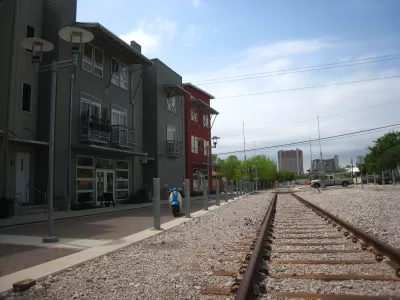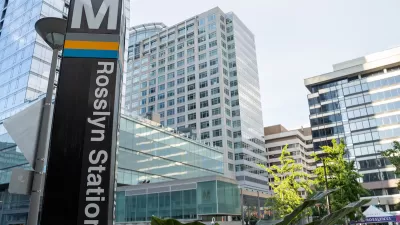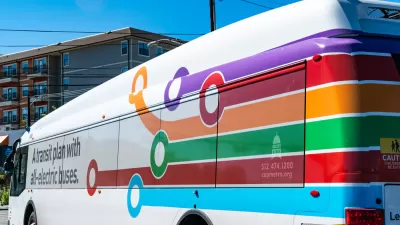New research about the importance of transit in building transit oriented communities has some surprising results that may have significant implications for how we plan and build in the future.

Writing in The Urban Edge, Andrew Keats reports on new research from UC-Berkeley professor Daniel Chatman that looks at what makes a successful transit oriented development. Surprisingly, he finds that proximity to transit (specifically light rail stations) has little impact on the success of TOD projects.
The study focused on people living within 0.4 miles of transit and in homes less than 7 years old, "essentially a proxy for those who live in 'transit-oriented development'." What it found was that those people owned fewer cars and were less likely to drive to work. However, the placement of a transit station nearby wasn’t the most influential factor in creating successful TOD development.
Rather, the most important factors were the scarcity of parking and the number of bus stations in the vicinity. Neighborhoods with little parking and lots of bus service cut car ownership by 44 percent.
“When all of these other factors were considered (bus access, parking availability, job and population density, and housing type), rail access had no effect on auto ownership,” Chatman wrote.
…
What really mattered was scarce parking, ample bus service, smaller apartments, more rental apartments, more stuff within walking distance, and being close to downtown jobs.
Chatman writes that cities without those, expensive light rail stations can still have the successful type of neighborhoods that transit oriented development has promised, but changes to policy need to take place. Among Chatman's suggestions, reducing parking requirements for new projects and encouraging density, while planning for amenities such as grocery stores, can achieve many of the goals espoused by TOD advocates.
FULL STORY: Why Transit Oriented Development Doesn’t Need Transit

Maui's Vacation Rental Debate Turns Ugly
Verbal attacks, misinformation campaigns and fistfights plague a high-stakes debate to convert thousands of vacation rentals into long-term housing.

Planetizen Federal Action Tracker
A weekly monitor of how Trump’s orders and actions are impacting planners and planning in America.

In Urban Planning, AI Prompting Could be the New Design Thinking
Creativity has long been key to great urban design. What if we see AI as our new creative partner?

King County Supportive Housing Program Offers Hope for Unhoused Residents
The county is taking a ‘Housing First’ approach that prioritizes getting people into housing, then offering wraparound supportive services.

Researchers Use AI to Get Clearer Picture of US Housing
Analysts are using artificial intelligence to supercharge their research by allowing them to comb through data faster. Though these AI tools can be error prone, they save time and housing researchers are optimistic about the future.

Making Shared Micromobility More Inclusive
Cities and shared mobility system operators can do more to include people with disabilities in planning and operations, per a new report.
Urban Design for Planners 1: Software Tools
This six-course series explores essential urban design concepts using open source software and equips planners with the tools they need to participate fully in the urban design process.
Planning for Universal Design
Learn the tools for implementing Universal Design in planning regulations.
planning NEXT
Appalachian Highlands Housing Partners
Mpact (founded as Rail~Volution)
City of Camden Redevelopment Agency
City of Astoria
City of Portland
City of Laramie




























